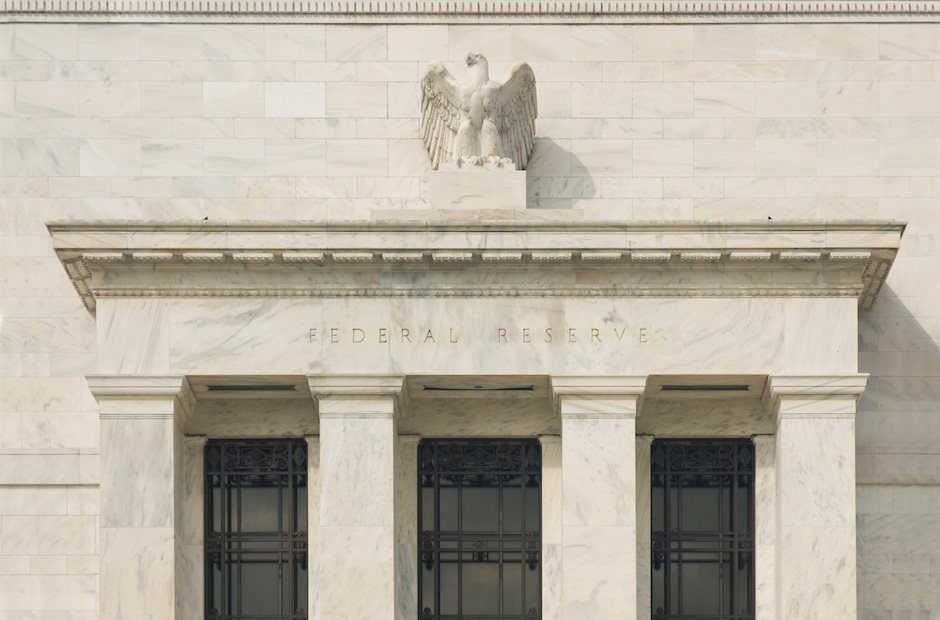Fed dot plot points to one more 25 bps hike in 2023 and 50 bps cut in 2024

According to the Federal Reserve's revised Summary of Projections (SEP), also known as the dot plot, the US central bank remains on track to raise the policy rate by another 25-basis-point this year before lowering it by 50 bps of rate cuts in 2024.
Breaking: Fed holds interest rate steady at 5.25%-5.5% as expected.
Key takeaways from the SEP
Fed officials' median view of fed funds rate at end-2025 3.9% (prev 3.4%).
Fed officials' median view of fed funds rate at end-2024 5.1% (prev 4.6%).
Fed officials' median view of fed funds rate at end-2026 2.9%.
Fed officials' median view of fed funds rate in longer run 2.5% (prev 2.5%).
Fed projections imply one more 25-basis-point rate hike this year and 50 bps of rate cuts in 2024, versus 100 bps of 2024 cuts in June projections.
Fed policymakers see much higher GDP growth of 2.1% in 2023, a lower unemployment rate and more progress on core inflation than they saw in June.
Fed policymakers see much higher GDP growth of 2.1% in 2023, a lower unemployment rate and more progress on core inflation than they saw in June.
Fed FAQs
What does the Federal Reserve do, how does it impact the US Dollar?
Monetary policy in the US is shaped by the Federal Reserve (Fed). The Fed has two mandates: to achieve price stability and foster full employment. Its primary tool to achieve these goals is by adjusting interest rates.
When prices are rising too quickly and inflation is above the Fed’s 2% target, it raises interest rates, increasing borrowing costs throughout the economy. This results in a stronger US Dollar (USD) as it makes the US a more attractive place for international investors to park their money.
When inflation falls below 2% or the Unemployment Rate is too high, the Fed may lower interest rates to encourage borrowing, which weighs on the Greenback.
How often does the Fed hold monetary policy meetings?
The Federal Reserve (Fed) holds eight policy meetings a year, where the Federal Open Market Committee (FOMC) assesses economic conditions and makes monetary policy decisions.
The FOMC is attended by twelve Fed officials – the seven members of the Board of Governors, the president of the Federal Reserve Bank of New York, and four of the remaining eleven regional Reserve Bank presidents, who serve one-year terms on a rotating basis.
What is Quantitative Easing (QE) and how does it impact USD?
In extreme situations, the Federal Reserve may resort to a policy named Quantitative Easing (QE). QE is the process by which the Fed substantially increases the flow of credit in a stuck financial system.
It is a non-standard policy measure used during crises or when inflation is extremely low. It was the Fed’s weapon of choice during the Great Financial Crisis in 2008. It involves the Fed printing more Dollars and using them to buy high grade bonds from financial institutions. QE usually weakens the US Dollar.
What is Quantitative Tightening (QT) and how does it impact the US Dollar?
Quantitative tightening (QT) is the reverse process of QE, whereby the Federal Reserve stops buying bonds from financial institutions and does not reinvest the principal from the bonds it holds maturing, to purchase new bonds. It is usually positive for the value of the US Dollar.
Author

Eren Sengezer
FXStreet
As an economist at heart, Eren Sengezer specializes in the assessment of the short-term and long-term impacts of macroeconomic data, central bank policies and political developments on financial assets.
















